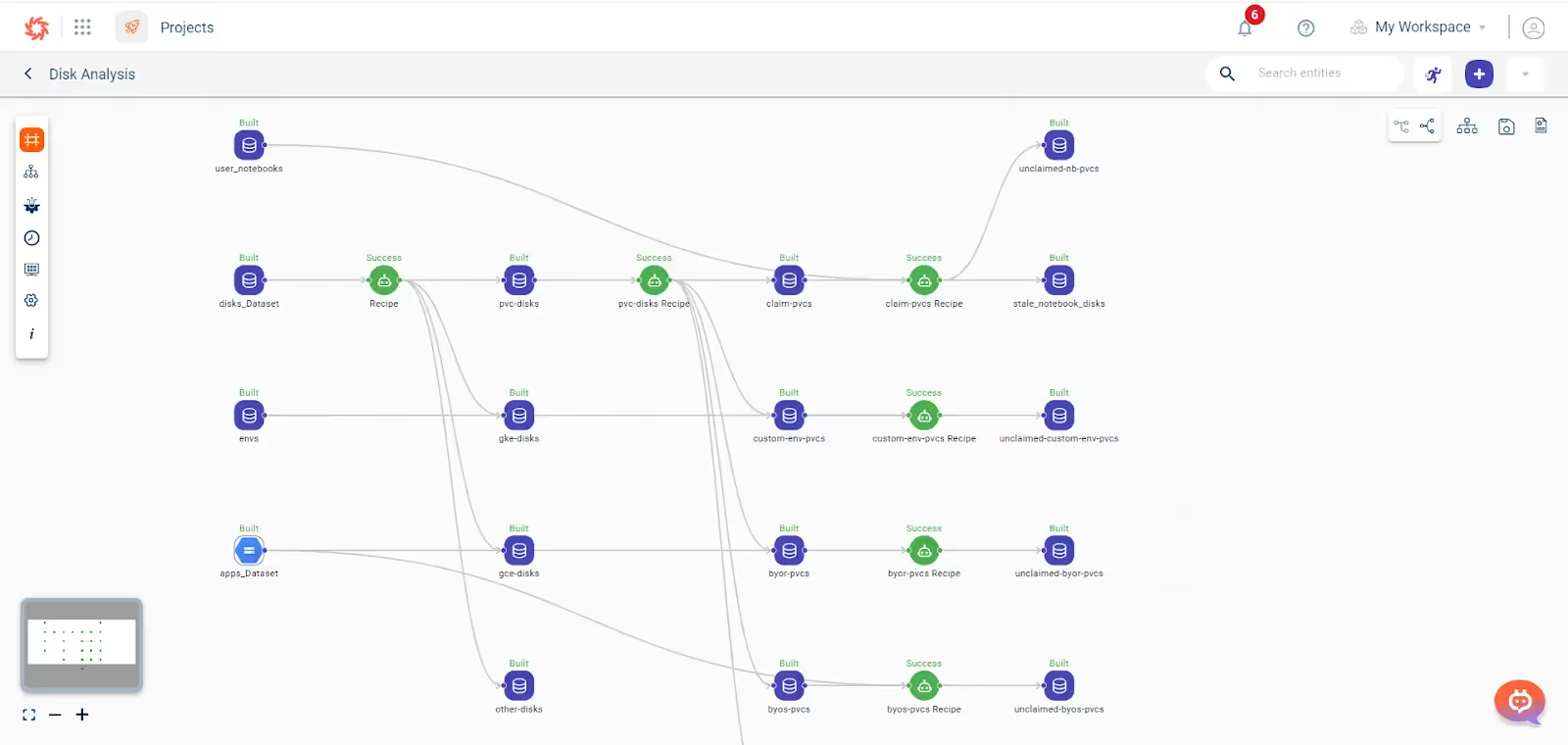

Managing cloud infrastructure efficiently is crucial not only for optimal performance but also for cost-effectiveness. At RapidCanvas, we encountered a significant challenge: identifying and managing stale or unused hardware across our cloud infrastructure. In this blog post, we'll delve into how we tackled this issue by "eating our own dog food" – utilizing our own platform, dynamic resource allocation, and AI-based solutions to save thousands of dollars.
At RapidCanvas, we firmly believe in practicing what we preach. Our platform, designed to streamline cloud infrastructure management, became our go-to tool for identifying stale or underutilized hardware. By leveraging the very solution we offer to our clients, we embarked on a journey to optimize our own infrastructure and reduce unnecessary costs.
Utilizing our platform provided us with firsthand insights into its effectiveness and highlighted areas for improvement. This real-world usage allowed us to refine our platform's features and functionalities, ensuring that it delivers maximum value to our clients.
One of the cornerstones of our approach is dynamic resource allocation. Instead of statically provisioning hardware, we utilize Kubernetes, Kops, and public cloud infrastructure to allocate resources on demand. This not only ensures optimal resource utilization but also enables us to scale seamlessly based on workload requirements.
Dynamic resource allocation empowers us to adapt to fluctuating demand patterns, allocating resources precisely when and where they are needed. This flexibility not only enhances performance but also minimizes unnecessary resource allocation, resulting in cost savings.
While managing compute resources is relatively straightforward, handling storage resources poses a unique set of challenges. Deletion of data can be irreversible, making it crucial to implement meticulous strategies for cleanup. We quickly realized that our storage data was fragmented across various locations, including Kubernetes, application metadata, and public cloud metadata.
The complexity of storage management necessitated a comprehensive approach. We implemented stringent inactivity settings within our applications to determine when resources could be safely removed, minimizing the risk of accidental data loss.
As cracks began to appear in our storage management strategy, we turned to AI for assistance. Our platform facilitated the collection of data from diverse sources, which was then processed using AI-based recipes. By intelligently analyzing this fragmented information, we identified stale resources and initiated the cleanup process.
The AI-driven approach enabled us to uncover hidden patterns and correlations within our data, enhancing our ability to identify and manage stale resources effectively. By leveraging machine learning algorithms, we could adapt our cleanup strategies based on evolving usage patterns, ensuring continuous optimization.

The cleanup process was swift and efficient, taking less than an hour to complete. Manual review ensured that critical resources weren't inadvertently deleted. By removing stale resources, we not only optimized our infrastructure but also realized substantial cost savings, amounting to thousands of dollars in reduced cloud bills.
The efficiency of our cleanup process underscores the importance of proactive resource management. By regularly identifying and removing stale resources, we prevent unnecessary costs from accruing, allowing us to allocate our budget more strategically towards initiatives that drive innovation and growth.
To ensure sustainability and repeatability, we automated the cleanup process by placing it on a cron job. This ensures that the process runs regularly without manual intervention, freeing up valuable time for our team to focus on higher-value tasks.
Automation not only streamlines our operations but also enhances reliability and consistency. By eliminating manual intervention, we reduce the risk of human error and ensure that our cleanup processes adhere to predefined guidelines and best practices.
Our journey towards cost optimization doesn't end here. The next step involves generating summarized alerts to proactively identify stale resources. As we gain more confidence in the logic behind our cleanup process, we aim to further automate this process, allowing for continuous optimization of our cloud infrastructure.
By implementing automated alerting mechanisms, we can detect and address potential issues in real-time, minimizing downtime and maximizing efficiency. Additionally, as we refine our cleanup algorithms and gain deeper insights into usage patterns, we can leverage advanced automation techniques to further streamline our operations and drive ongoing cost savings.
In conclusion, by embracing dynamic resource allocation, leveraging AI, and utilizing our own platform, we successfully tackled the challenge of identifying and managing stale resources in our cloud infrastructure. This not only optimized our operations but also resulted in significant cost savings. As we continue to refine our processes and embrace automation, we remain committed to driving efficiency and innovation in cloud infrastructure management.


